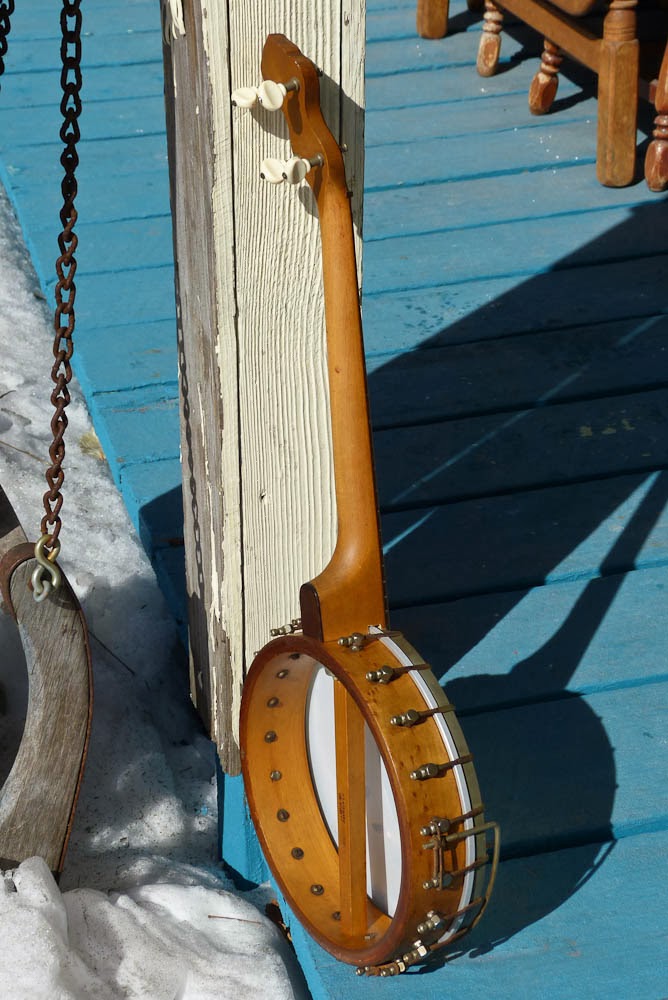c.1930 SS Stewart "The Student" Tenor Banjo
While branded SS Stewart, this is (I'm fairly certain) a Regal-built tenor just like any number of Slingerland, Concertone, and Lyon & Healy (among many other names) brand instruments from the mid-20s through the mid-30. These make good, practical instruments and at their price point are ideal student or mid-level tenors.
After the usual work (fret level/dress, replacement head and bridge, cleaning, setup) they also play well, too, and tend to be quite loud and gutsy. This one is no slouch in that department -- and its big round "hoop" tonering and multi-ply rim are part of the reason these cut so well.
After the usual work (fret level/dress, replacement head and bridge, cleaning, setup) they also play well, too, and tend to be quite loud and gutsy. This one is no slouch in that department -- and its big round "hoop" tonering and multi-ply rim are part of the reason these cut so well.
The 10 3/4" diameter rim got a brand new Remo "frosted top" head and an older (70s?) bridge from my parts bin. Even with some added shims to increase the back-angle on the neck, the bridge is a little shorter than usual (it's a little under 1/2" tall) but it plays well (spot on: 1/16" at the 12th fret). This is a short scale tenor and while I have it strung for standard (CGDA) tuning, it would also make a good "Celtic" tenor jo tuned lower for mandolin and fiddle players to double on.
That dark-stained headstock veneer isn't rosewood but it does look nice in the light, no? Original wood nut, too.
Pearl dots in a dyed-maple fretboard. The neck wood is hard maple in a natural (now yellowed) finish.
The rim hardware is original except for 3 "shoes" and their corresponding hook/nuts, all of which were appropriated from my vintage parts. The "Vega style" armrest is a nice feature to have, by the way -- keeps the arm elevated over the tension hoop which would ordinarily cut into the arm of a player that likes to rest their forearm over the rim.
The multi-ply maple rim has a birdseye maple veneer on its exterior.
The friction pegs are original but the buttons are from my parts stash. The originals were damaged.
Here's the (in-brand-name-only) SS Stewart mark. By the time this was made the original Stewart factory was long gone.
The neck brace is a simple screw-adjustable type. These make tensioning-up or loosening the neck (for adjustment) nice and easy.
The simple non-adjustable tailpiece works just fine and (thankfully) has tabs that allow loop or ball-end stringing.
















Comments